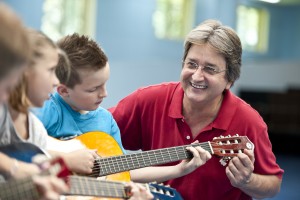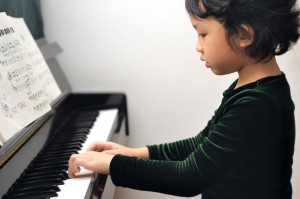By Remus Badea, Executive Director, American Music Institute
There are many ways to approach learning music. While many individuals choose to learn to read music notation and play on the basis of sight reading, the world has also seen a plethora of musicians who play instruments only on the basis of hearing notes. Learning music by ear is done by repeatedly listening to other musicians and then attempting to recreate what one hears. In addition to mentally hearing rhythms and pitches the skill of reproducing those sounds involves melody, harmony and bass line. This technique of being able to recognize music by ear requires training and is something that needs to be developed with practice.
Beginning steps for learning to play a song by ear
Understanding the importance of ear training
While learning how to play a song by ear definitely provides a wonderful feeling of achievement and a whole lot of fun, there are many other benefits that ear training can offer. Ear training allows individuals to understand patterns that are commonly used in music and allows for a better understanding of musical expression.
By learning music using ear training, an individual will have better ability to improvise and will also have more freedom in directly expressing music that they hear in their minds.
1. Listen to a piece of music repeatedly
When learning a piece of music by ear, it is important to listen carefully and to try and remember the structure and the changes in musical patterns. This should be done to the extent that an individual can recall the music later on, while remembering all the notes, subtleties and nuances contained in the song.
While this is certainly a laborious process, it offers many benefits as well. Being able to recreate tunes mentally offers an internalized understanding of melody, rhythm and structures commonly used in music.
2. Use software
Often individuals may find it tough to grasp all of the notes played in a piece of music. This may be due to the music being played fast or it may be due to too many instruments playing together. Fortunately, with the use of software, music can be slowed down or equalized, which allow listeners to easily determine what is going on within the music. Software is available both in free and paid versions.
3. Develop a power of visualization
Finally, students who want to learn music by ear will need to develop an internal power of visualization. When recreating a tune in the mind, it is to try and visualize the notes being played on an instrument. The speed at which individuals develop this power varies, but all musicians who play by ear rely on understanding music through a well thought out power of internal visualization.
While learning how to play music by ear certainly is a meticulous task which requires a lot of time and effort, the benefits are unparalleled. There is also an unmatched level of joy and a feeling of achievement when one is able to recreate music simply by hearing it.
Practical Tips for Learning to Play a Song by Ear
1. Listen to the song again and again
Identify the number of different parts and if any of them repeat. This makes up the song structure. The song structure is important because some songs can actually just have one riff or chord progression played throughout.
2. To learn the chords, figure out the bass line
This is helpful because you can easily see what key the song is in. Once that’s done, you can apply some theory to help get the right chords.
3. Learn the rhythm
Don’t pay any attention to the notes or chords (even though you have already learned them). Figure out the rhythm by tapping your foot to the beat or tapping your fingers on something to get the rhythm.
4. Save solos for last
If you have already figured out everything else, then you know what key the song is in and should be able to do the solo work pretty easily. If the song does not have any solo parts, you can just add them using some simple scales. You should try to play the solo part using pentatonic scales first. Be sure your solo is based on the main melody of the song.
Remus Badea is Concertmaster of Southwest Symphony Orchestra, adjunct professor at Elmhurst College, and Executive Director of American Music Institute. He teaches violin, viola, cello, and piano.
[maxbutton id=”2″]

